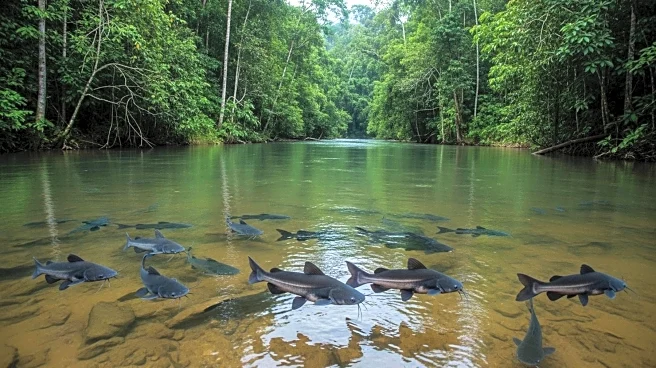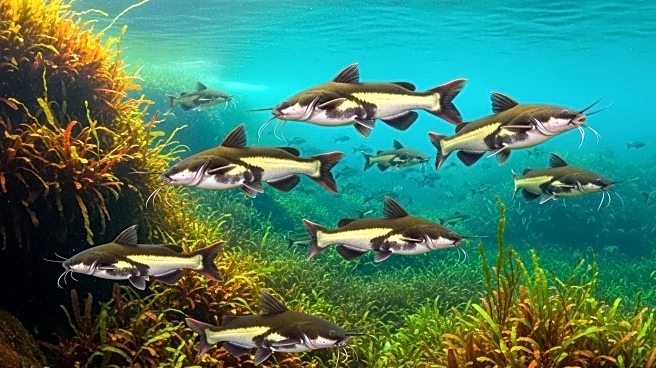What is the story about?
What's Happening?
Researchers in Brazil have documented an unprecedented migration of bumblebee catfish, Rhyacoglanis paranensis, climbing the Sossego waterfall. Thousands of these rare catfish, known for their orange and black stripes, were observed scaling the slippery rocks in a reverse-cascade. The migration, which occurs at night, involves the catfish emerging from small pools and climbing over each other to reach a trickle of water flowing from above. This phenomenon was witnessed by researchers from the Federal University of Mato Grosso do Sul and the Pantanal Biopark, who published their findings in the Journal of Fish Biology.
Why It's Important?
The discovery of the bumblebee catfish migration challenges existing notions about fish migratory patterns, particularly the idea that only large fish migrate. This event highlights the need for further research into the behaviors and biology of smaller fish species in Brazilian rivers. Understanding these patterns is crucial for conservation efforts, especially as human activities like damming threaten to disrupt natural migratory routes. The migration also raises questions about the ecological factors driving such behavior, including breeding and resource availability, which could inform future environmental policies.
What's Next?
Researchers aim to investigate whether the bumblebee catfish migration is an annual event and if other Rhyacoglanis species exhibit similar behaviors. The findings could lead to more comprehensive studies on fish migration in the region, potentially influencing conservation strategies. As rivers continue to be dammed, understanding these migratory patterns becomes increasingly important to ensure the survival of rare species like the bumblebee catfish. Further research may also explore the impact of environmental changes on fish behavior and habitat, contributing to broader ecological knowledge.
AI Generated Content
Do you find this article useful?
















